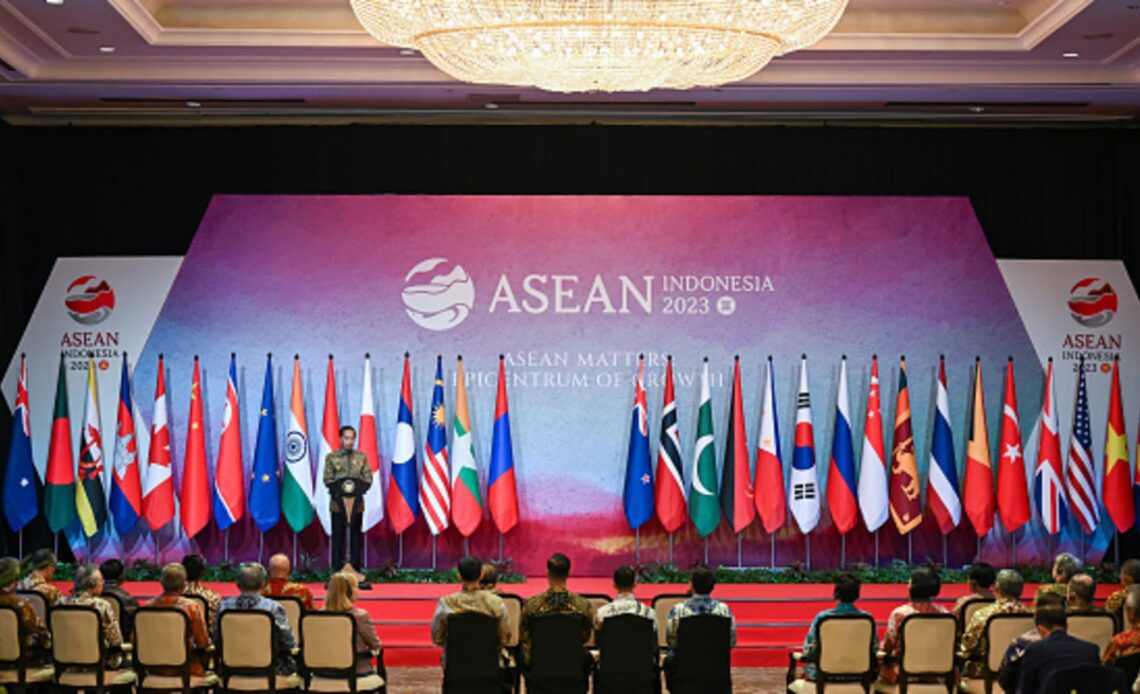Indonesian President Joko Widodo makes a speech during the Association of Southeast Asian Nations (ASEAN) Foreign Minister’s Meeting in Jakarta, Indonesia on July 14, 2023.
Murat Gok | Anadolu Agency | Getty Images
A new regional cross-border payment system recently implemented by Southeast Asian nations could deepen financial integration among participants, bringing the ASEAN bloc closer to its goal of economic cohesion.
The program, which allows residents to pay for goods and services in local currencies using a QR code, is now active in Indonesia, Malaysia, Thailand and Singapore. The Philippines is expected to join soon.
That’s according to each country’s respective central bank.
The move comes after the five Southeast Asian countries signed an official agreement late last year. At the recent ASEAN summit in May, leaders also reiterated their commitment to the project, pledging to work on a road map to expand regional payment links to all ten ASEAN members.
The scheme is aimed at supporting and facilitating cross-border trade settlements, investment, remittance and other economic activities with the goal of implementing an inclusive financial ecosystem around Southeast Asia.
Analysts say retail industries will particularly benefit amid an expected rise in consumer spending, which could in turn strengthen tourism.
Regional connectivity is considered crucial to reduce the region’s reliance on external currencies like the U.S. dollar for cross-border transactions, particularly among businesses. The greenback’s strength in recent years has resulted in weaker ASEAN currencies, which hurts those economies since the majority of the bloc’s members are net energy and food importers.
“The system will forgo the U.S. dollar or the Chinese renminbi as intermediary,” said Nico Han, a Southeast Asia analyst at Diplomat Risk Intelligence, the consulting and analysis division of current affairs magazine The Diplomat.
A unified cross-border digital payment system will “foster a sense of regionalism and ASEAN-centrality in managing international affairs,” he added. “This move becomes even more crucial in light of escalating tensions among major global powers.”
How it works
By connecting QR code payment systems, funds can be sent from one digital wallet to another.
These digital wallets effectively act as bank accounts but they can also be linked to accounts with formal financial institutions.
For instance, Malaysian tourists in Singapore can make a payment with Malaysian ringgit…
Click Here to Read the Full Original Article at Top News and Analysis (pro)…


